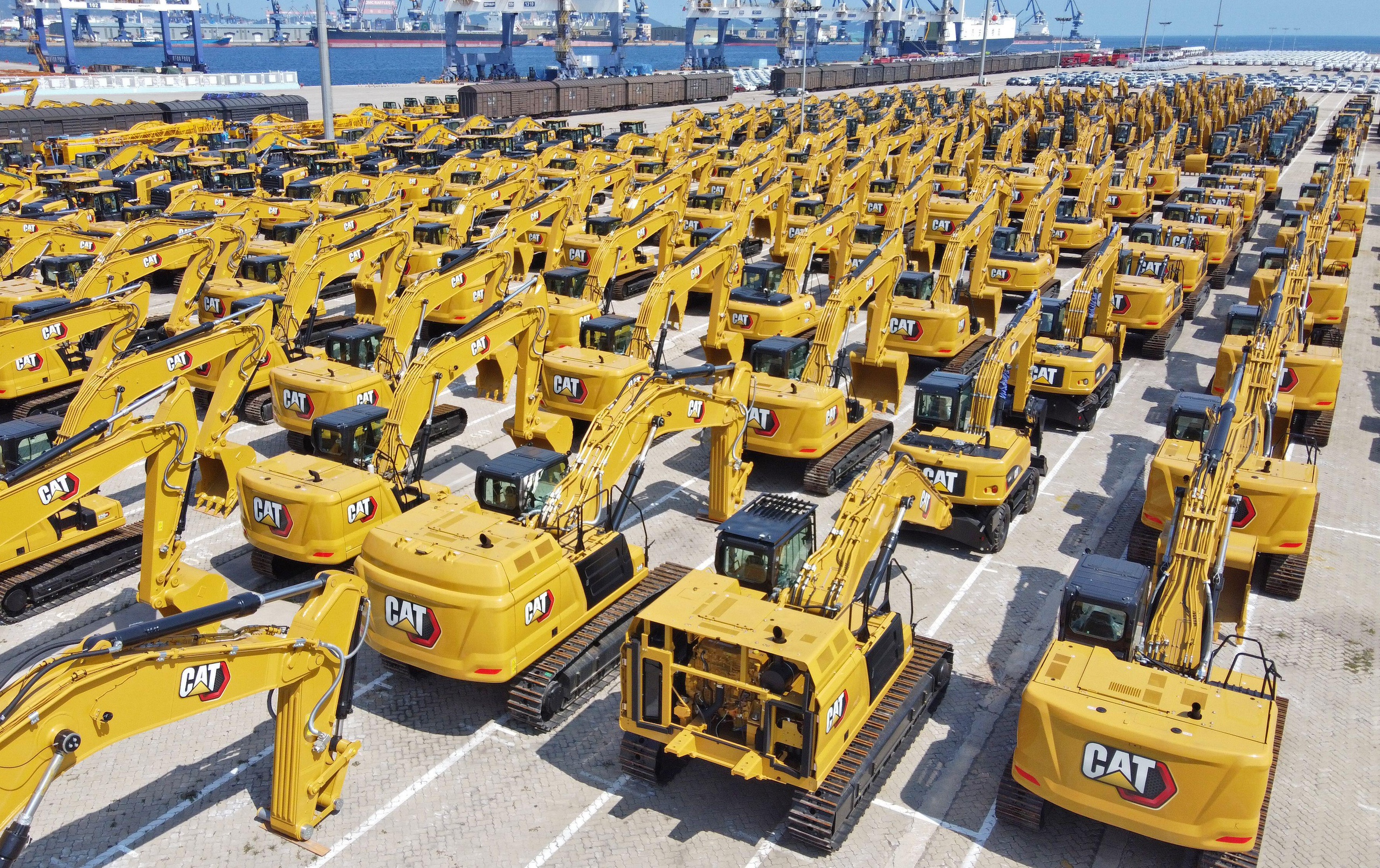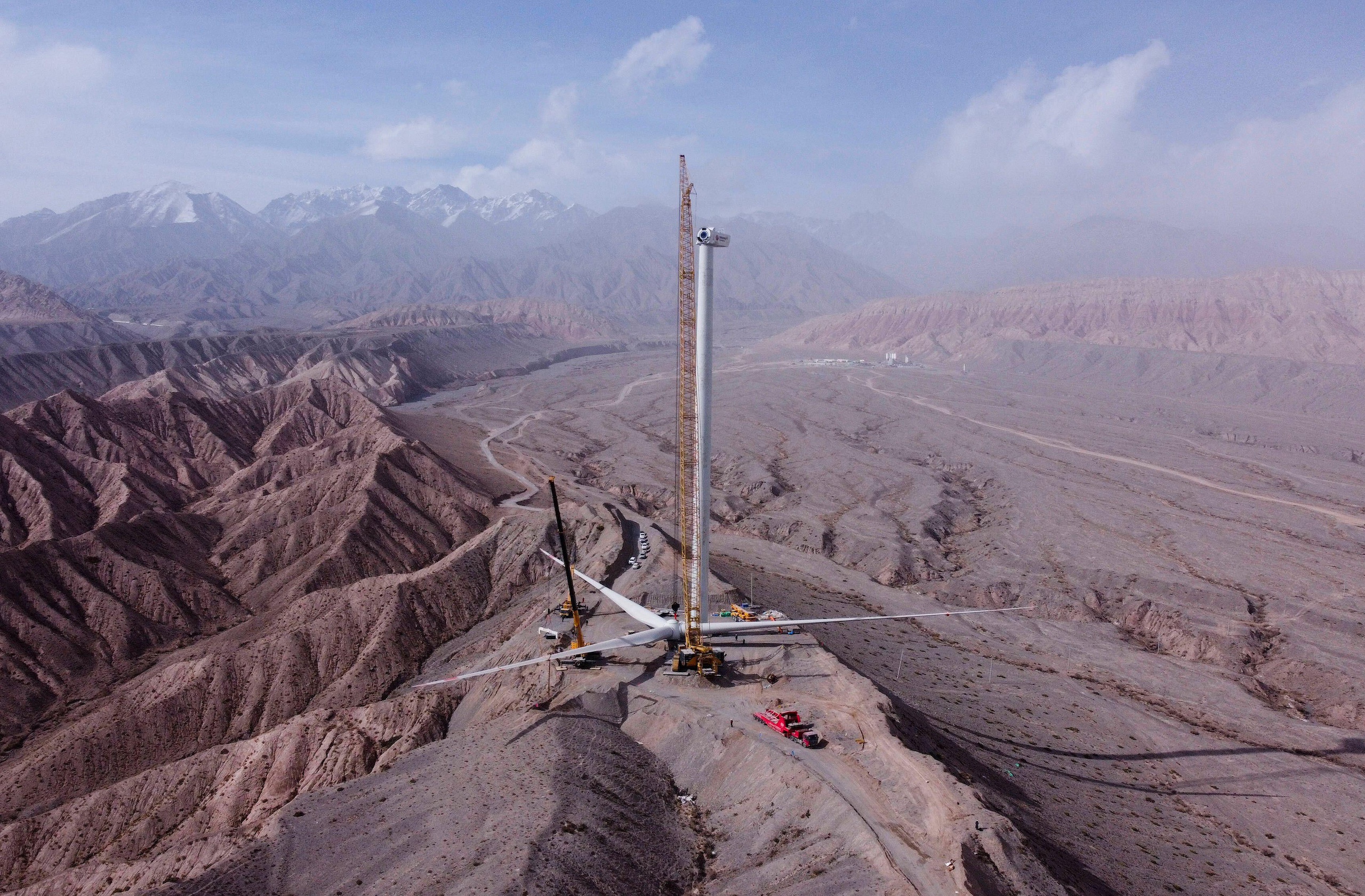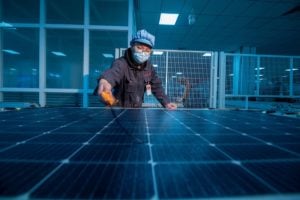China is responsible for 30% of global greenhouse gas emissions and for 90% of the growth in CO2 emissions since 2015.
Peaking its CO2 emissions, and then achieving substantial reductions over the next decade, will be key to keeping alive the global Paris Agreement targets for limiting warming.
Clean-energy growth accelerated massively in China in the 2020s, and especially in 2023. However, a simultaneous surge in the growth of energy consumption led fossil-fuel consumption and CO2-emissions growth to accelerate regardless.
China’s emissions trajectory over the next decade will be determined by two questions. Will energy-demand growth return to pre-pandemic levels after the surge seen in the past few years? And will clean-energy growth continue?
With China due next year to submit its new climate targets for 2035, the answers to these questions are more urgent than ever.
Why did emissions surge during zero-Covid?
In 2020-23, China’s energy-consumption growth almost doubled to 4% per year, from 2.4% per year during the preceding five years. CO2-emissions growth accelerated from 0.1% per year to 3% per year, and electricity-consumption growth increased slightly from 5.5% to 6.3%.
This dramatic acceleration is perhaps unexpected; almost all other countries saw their energy consumption fall during the pandemic. Analysts have noted that electricity consumption has been growing faster than GDP, and industrial electricity consumption faster than industrial value added.
The acceleration in energy-use happened even as GDP growth slowed slightly from pre-pandemic levels in 2020-23, according to the National Bureau of Statistics.
Many explanations for this have been offered, most commonly electrification. That is, the shift from using fuels directly in buildings, industry and transportation, towards using electricity instead. Analysts have also pointed to high-tech and cleantech manufacturing, exports of refined metals products, and a rapid rise in residential power consumption due to the transition from using coal to electricity for heating in northern China. Increased demand for air conditioning during extreme heatwaves has also been suggested. Striking headlines have positioned data centres and AI as major drivers of electricity demand, while other analyses have emphasised emerging industries more broadly.
These explanations fall short, however, because electrification can explain growth in electricity consumption but not in total-energy consumption. The explanations overlook a major shift in China towards making products that consume more energy and electricity during manufacturing.
Shift to energy-intensive industry
The key driver of faster energy-consumption growth has been faster growth in energy-intensive manufacturing since around 2020. This occurred to compensate for weak growth in services and consumer-facing industries, which consume less energy. The structure of the economy therefore became more energy and electricity intensive, as Chinese researchers at University College London have shown. The shift also happened within the industrial sector, where non-ferrous metals and chemicals subsectors grew especially rapidly. However, no one subsector was responsible for more than 10% of the growth, indicating that this is an economy-wide trend.
What caused the shift? The pandemic and associated policies negatively affected many service industries, as Zhou Dadi, a member of China’s National Expert Advisory Committee on Climate Change, has pointed out. The government amplified this impact with pro-business policies that mainly benefited manufacturing industries, including discounted electricity, tax cuts and export-promotion policies. Most other countries transferred very large sums of money to households, increasing their spending power and stimulating private consumption which tends to be less energy intensive than manufacturing. At the same time, when people were stuck at home, consumption demand both in China and abroad shifted from services to durable goods, boosting demand for Chinese manufacturing.
In the past couple of years, the central government has weakened controls on energy-consumption growth, a factor highlighted by experts interviewed by China Business News.
Manufacturing of the “big three” products – batteries, EVs and solar-power equipment – is responsible for approximately 3% of China’s CO2 emissions, and was behind an estimated 2% increase in emissions out of the 12% total increase from 2020 to 2023, based on a calculation using the reported production volume and emissions intensity for each product.
Another apparent paradox is the strong growth in energy-intensive industrial output even as the real-estate sector, previously a major driver of demand for energy-intensive commodities, is contracting. The wave of investment in manufacturing created massive demand for steel to build industrial machinery, industrial facilities and associated infrastructure. Rather than drive growth, however, this merely replaced the steel demand from real estate which fell sharply in 2022 and 2023. Steel output has been stable and cement output has been falling.
Besides these structural factors, CO2 emissions increased in the second half of 2022 and in 2023 because of a slump in hydropower generation due to historic droughts in south-west China. This was made up for through increased use of coal-fired power generation, which contributed a 1% increase in emissions from 2020 to 2023. Rainfall has already increased this year and the increased supply of power as hydropower output recovers will displace coal-fired generation.
Missing the forest for the trees
Many sector-specific explanations have been offered for the rapid increase in electricity demand, in particular.
Data centres can be major local electricity consumers, but their share in the big picture is tiny, with IT services accounting for 2% of electricity-demand growth. The same applies to other “strategic emerging industries”.
China officially defined its first version of “strategic emerging industries” in a 2010 State Council decision, Fudan University academics have written. The designation included seven industries:
🌱 Energy conservation and environmental protection
🖥️ New gen IT
🧬 Biologicals
🏭 High-end equipment manufacturing
⚡ New energy
🔧 New materials
🚘 New energy automobiles
Electricity demand for heating and cooling did increase significantly. However, the residential and commercial buildings sector as a whole contributed only a quarter of the growth in electricity demand; heating and cooling was responsible for a bit more than half of that, based on analysis of monthly electricity consumption data and high-resolution daily temperature data. Overall, heating and cooling were responsible for 15-20% of electricity-demand growth.
While extreme heatwaves naturally grab attention, the direct effect of higher temperatures during summers is a very small factor in increased power demand. Cooling loads during the hottest days have been dramatic, but on an annual basis the increase in average cooling needs has been gradual. Instead, the heatwaves convinced a lot of households and businesses to install air conditioners, which they are then likely to use even during more average weather.
The ongoing drive to reduce household coal-burning has also shifted heating from coal to electricity and gas. Energy-efficiency improvements for buildings could help reduce electricity demand while keeping residents comfortable, but progress on this front has been underwhelming.
Will rapid energy-demand growth continue?
The most important question is will the high energy-demand growth continue? With the post-pandemic recovery of services, the lopsided nature of economic growth driven by energy-intensive industry should be unwound. Services and other sectors that underperformed during the pandemic need to see catch-up growth. The recovery has been slower than the government hoped for, but the most recent data for retail sales and service sector growth in March was promising.
A successful recovery of household consumption and economic transformation will result in substantially lower energy-demand growth in relation to GDP growth.
The government’s focus on manufacturing as the key economic growth engine is set to continue, under the slogan of pursuing “new productive forces” announced by President Xi late last year. While the policy emphasises new, smarter and greener industries, there is also an important focus on upgrading traditional industries, including energy-intensive ones. This could mean the continuation of a more energy-intensive pattern of economic growth.
However, investment in manufacturing capacity and growth in industrial output cannot continue at the recent rates, given oversupply and overcapacity issues. If the push is to be successful, it will have to switch from energy-intensive commodities to higher value-added products.
Air-conditioning ownership and usage will continue to grow, but longer-term projections find much slower growth rates due to saturation of the market and improving energy efficiency of air conditioners.
Clean energy: was 2023 an anomaly, or the new normal?
Since the 2020 announcement of the target to achieve carbon neutrality before 2060, China has seen a major surge in clean-energy installation, from what were already world-leading levels. The most striking growth has been in solar power, where some 217 gigawatts (GW) were installed in 2023. This was twice the current installed solar capacity of the US, and four times what China added in 2020. Wind power also saw strong growth of 76 GW, doubling year-on-year and adding more than the total installed capacity of Germany, in just one year.
In 2022 and 2023, China permitted 10 new nuclear reactors for two consecutive years, for the first time, significantly accelerating the pace of construction starts. Each reactor takes approximately 5-7 years to complete and will add around 1.2 GW of generating capacity.
The new solar, wind, hydro and nuclear capacity added in 2023 alone will generate an estimated 420 terawatt hours (TWh) per year of electricity, equal to the total consumption of France.
More importantly, it will be sufficient to cover energy-demand growth at pre-pandemic levels.
However, views on future developments diverge widely. The solar and wind industries have argued for maintaining annual capacity additions at around 2023 levels.
The government appears to be targeting something more modest. Zhang Jianhua, head of the National Energy Administration (NEA), wrote in a recent article that clean energy should cover 70% of energy-consumption growth in 2026-30. This means that 30% would still be covered by fossil fuels and CO2 emissions would continue to increase, and implies that clean-energy additions would slow down substantially. Continued emissions growth would carry a major risk of missing China’s 2030 carbon-intensity commitment, as there is no space for energy-sector CO2 emissions to increase from 2023 to 2030 under the commitment, assuming average GDP growth of 5% or less.
The grid is the key
The key constraint on clean-energy growth will be the ability and willingness of grid operators to integrate very large amounts of clean energy.
Last year, numerous provincial grid operators began to limit additions of new wind and solar, due to concern over not being able to fully integrate the additional generation. This is alarming because such challenges are arising when the share of wind and solar in China’s power generation is, at 15%, still modest. Germany, Spain and Greece, for example, see shares of wind and solar at around 40% of power generation.
The challenge is that China’s grid management is outdated. Reforming grid operation requires overcoming powerful interests, most notably the owners of coal-fired power plants who are reluctant to accept the reduced space for coal-power generation that follows clean-energy growth.
Local governments are keen to resolve these issues, because new clean-energy projects are a major source of economic activity and revenue. Many of them have also backed sizeable investments in the manufacturing of solar, batteries and other cleantech, and are eager to ensure those investments pay off.
Absent major progress on grid reforms initiated by the central government, the main emphasis will be on engineered solutions. Pumped hydro is already booming and grid-connected batteries and green-hydrogen projects are taking off. An increasing number of provinces are requiring new solar and wind farms to install on-site electricity storage. Another possible move is to slightly increase the amount of solar and wind generation that is allowed to be “wasted”, from 5% currently. This would mean the grid operator would have to guarantee grid access for slightly less of the potential output of a province’s wind and solar farms than the current minimum of 95%, making the integration of new capacity easier. Such measures would reduce the profitability of new clean-energy projects, but likely not so much as to render them unprofitable. On the plus side, they would increase the amount of capacity that can be installed without requiring onerous grid reforms.
Is peak emissions imminent?
In one sense, the outlook for clean energy is bright. The willingness to develop projects and to invest is strong, as shown by growth far ahead of central government targets, spurred by enthusiasm from local governments and companies.
However, the central government’s level of ambition is unclear. There’s currently no plan on how to meet, let alone exceed, China’s 2025 and 2030 climate commitments, and no commitment to maintain the level of clean-energy installations reached in 2023. More clarity is likely to emerge with the publication of China’s new climate targets under the Paris Agreement, due in early 2025, and the next five-year economic plan in early 2026.
The focus of climate policy has shifted from controlling energy consumption and fossil-fuel consumption to building green industry. The manufacturing drive risks making the economy more energy-intensive and thus counteracting the clean-energy drive.
For now, clean-energy investments are driven by enthusiasm from local governments and markets. However, when roadblocks emerge, such as shortcomings with grid operation that limit clean-energy capacity additions, central government action is needed to overcome them. The future trajectory of China’s emissions still hangs in the balance. What’s clear is that the clean-energy boom and potential shift to new, less energy-intensive growth engines gives China the ability to peak emissions imminently and to achieve substantial emissions reductions over the next decade, if the country so chooses.
With thanks to Taylah Bland, Asia Society Policy Institute, for contributing research.












